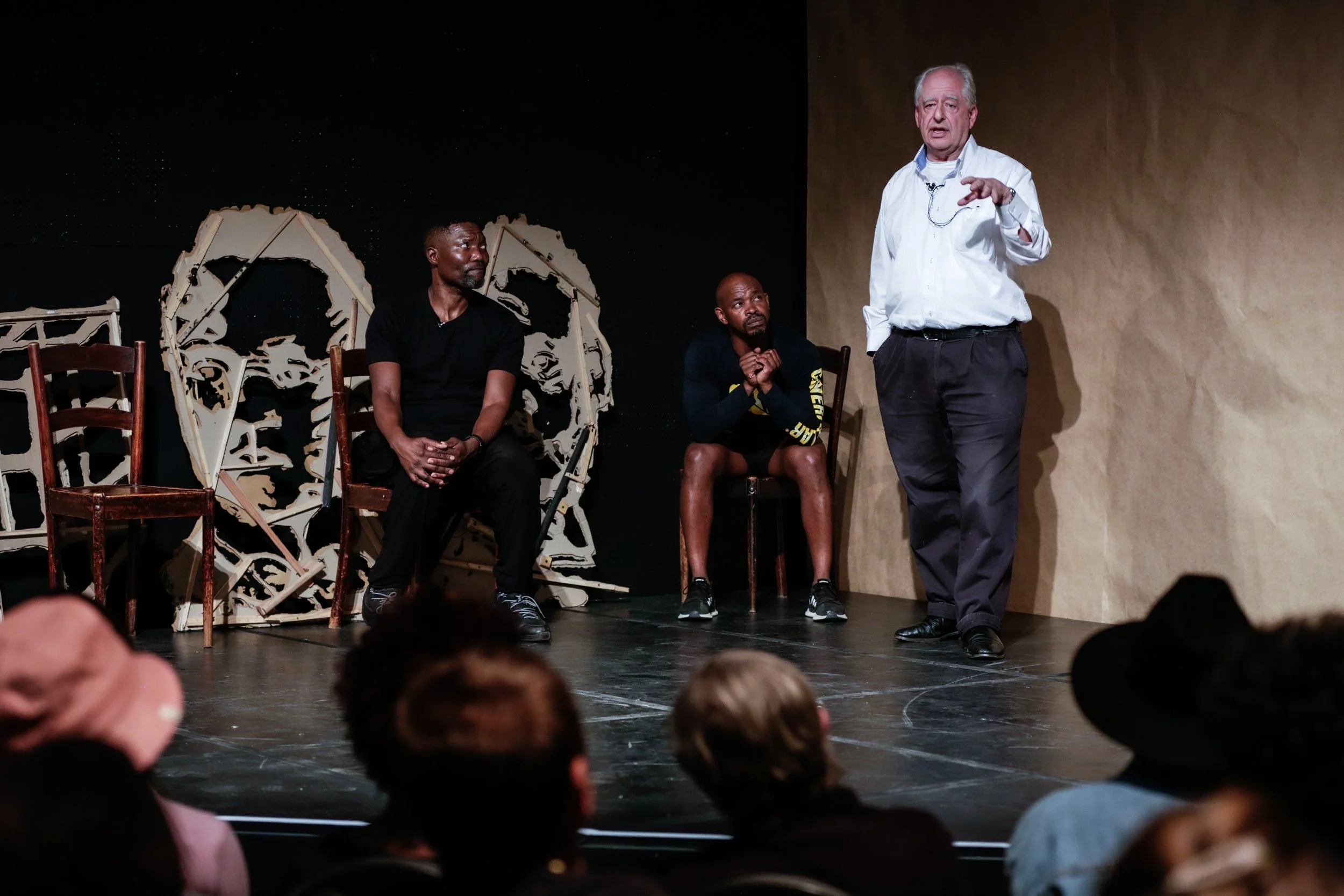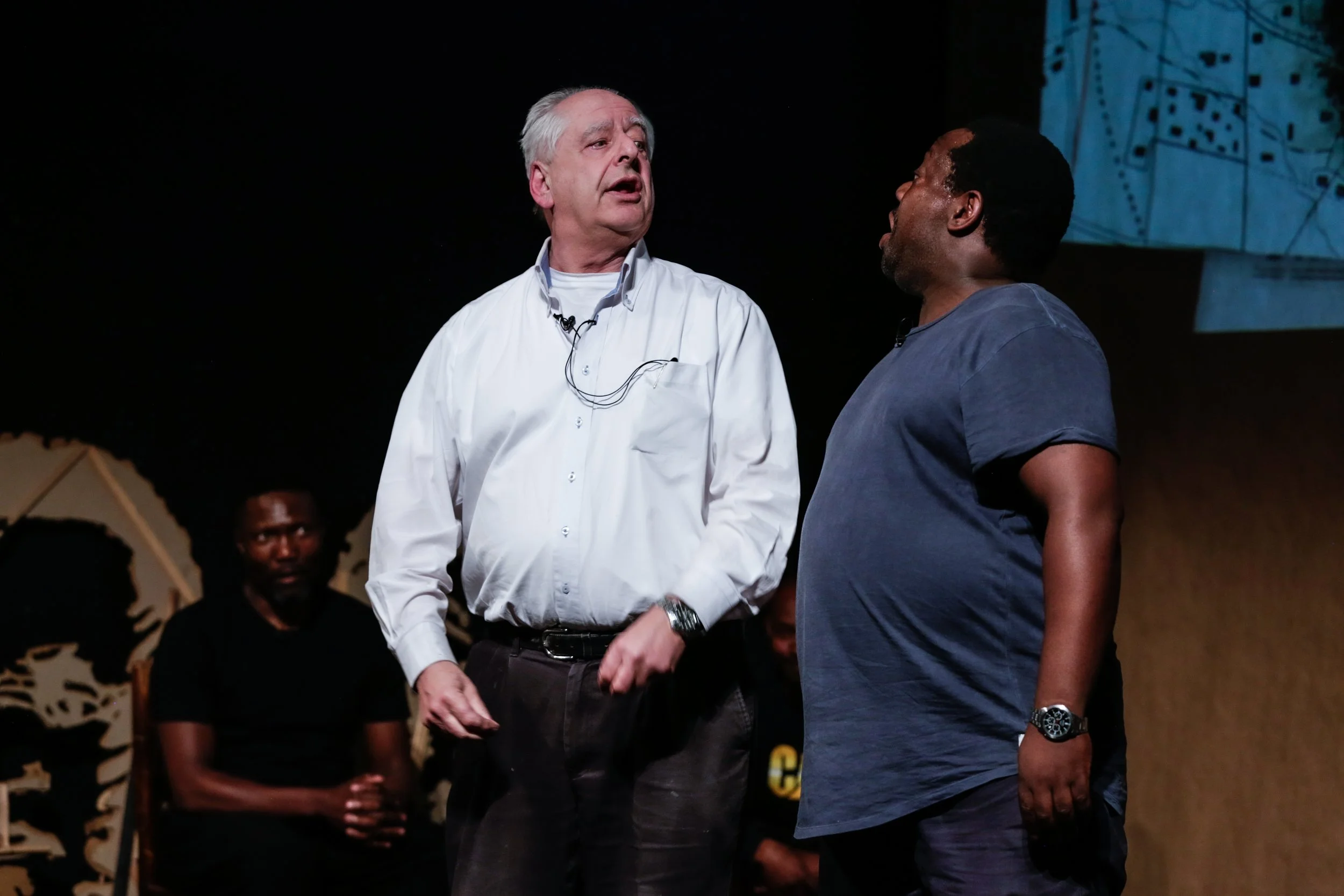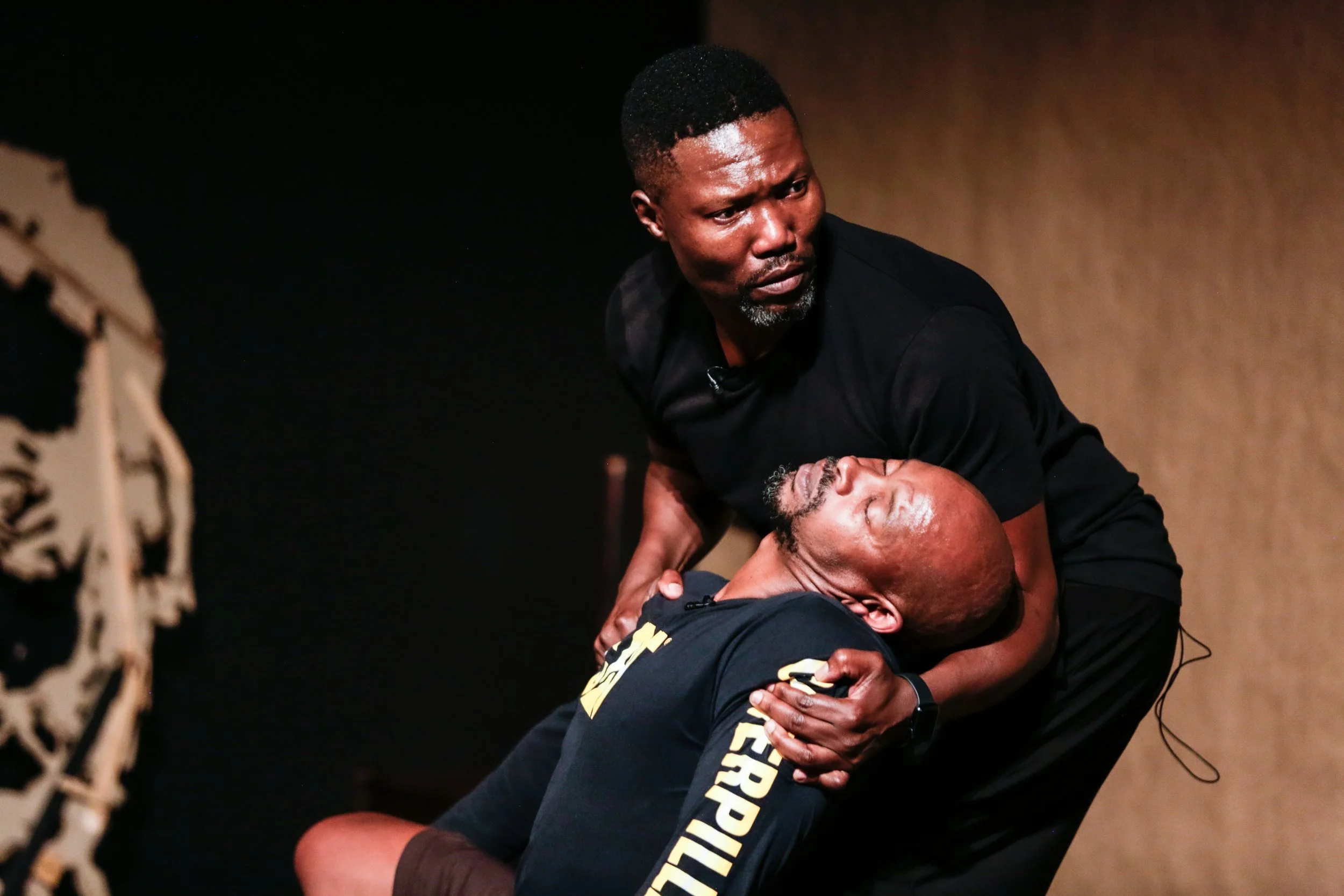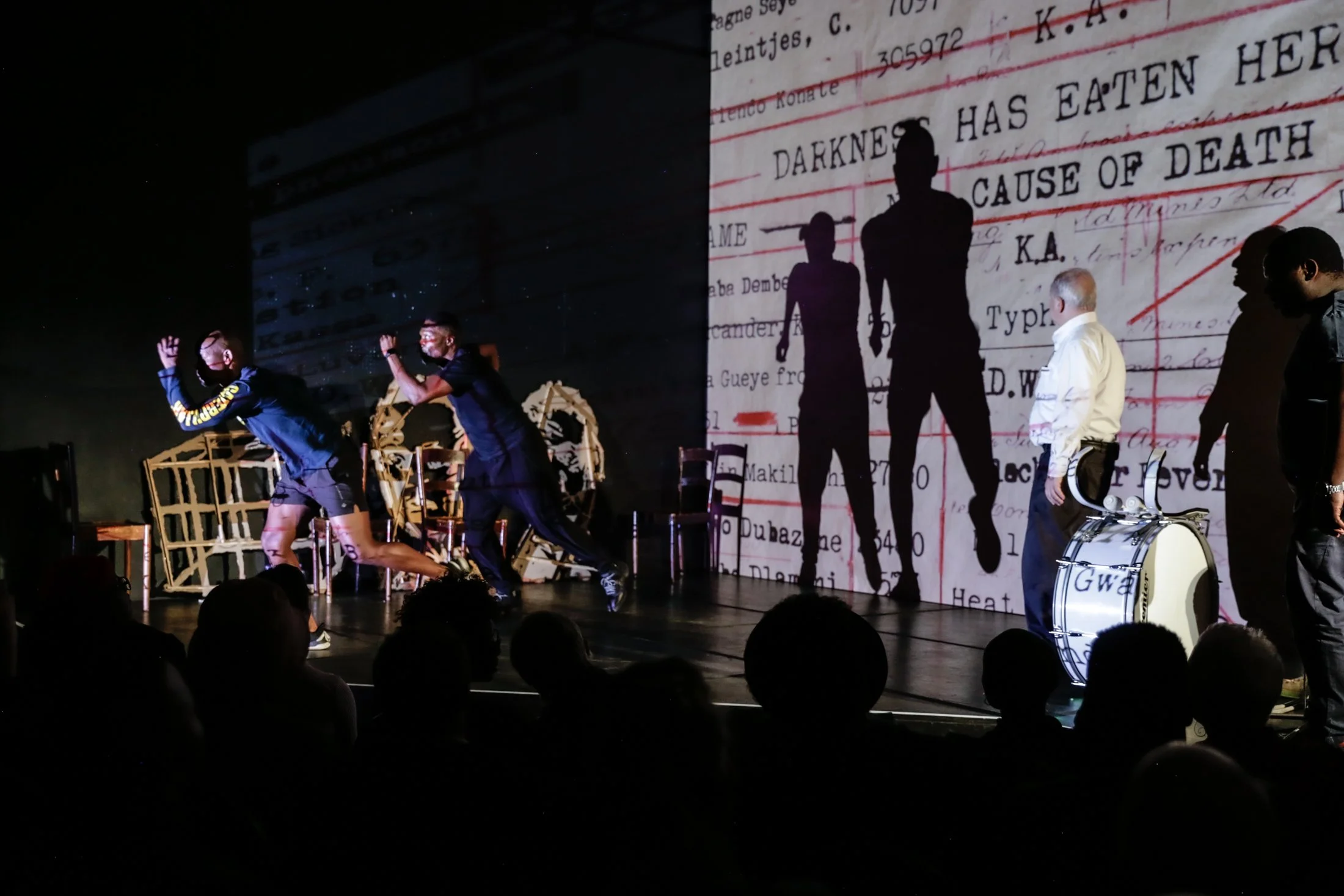HOW | Showing the Making: William Kentridge on The Head & The Load
A wounded soldier holds a trembling salute, and a group of men clad in paper skirts stamp out a militaristic beat. European generals argue over Africa in furious gibberish, while percussion sounds out like gunfire. Even in their isolation, extracted from the greater context of the performance, these singular moments from William Kentridge’s The Head & The Load serve as vital points of entry into the production and its collaborative process of making.
On 5 April 2023, SO | The Academy for the Less Good Idea hosted HOW | Showing the Making: William Kentridge on The Head & The Load. Taking place at The Centre for the Less Good Idea, the event saw Kentridge and key members of the cast of The Head & The Load, Nhlanhla Mahlangu, Thulani Chauke, Gregory Maqoma, and Tlale Makhene, providing a window into the background, process and thinking behind the making of the production.
In this way, Kentridge and the cast were able to expand on the inception of the production, their way of researching and conveying history through performance, and the use of language, shadow, movement and more in The Head & The Load.
Points of origin
The Head & The Load is an ambitious performance exploring Africa’s role in the First World War. The internationally-renowned production combines music, dance, film projections, mechanised sculptures and shadow play to illuminate the largely untold story of millions of African porters and carriers who served – and in many cases died for – British, French and German battlefield forces.
Of the many points of origin for The Head & The Load – historical, conceptual, musical and otherwise – it was the invitation to produce a new work that would be staged in the Park Avenue Armory that gave the production its signature form – a processional performance, often on a custom-built stage, that makes use of projection, shadow puppetry and a roving cast.
The Head & The Load also has an early relationship with The Centre for the Less Good Idea. Many of the musicians, performers and choreographers in the production have come through The Centre, explains Kentridge, while the unique creative processes and methodologies employed by Kentridge in the making of The Head & The Load – free-spirited improvisation, collaborative exploration, and the pursuit of the secondary, peripheral idea – continue to inform some of The Centre’s ways of working.
Broken language
“One of the striking aspects of colonialism is Europe’s incomprehension of Africa – not being able to hear the very clear language that was being spoken by Africa to Europe. There is the sense of language breaking down into nonsense, which is what Dadaism was very much about.” – William Kentridge
The libretto of The Head & the Load, explains Kentridge, is a collage of texts and phrases from a range of sources. There is isiZulu, siSwati, French, barking dogs, gibberish and more. Texts come from Sol Plaatje, Frantz Fanon, and Tristan Tzara among others. A key moment in the production is The Berlin Conference, the meeting of European powers to divide up the ownership of Africa. This is told through sections of Kurt Schwitters’s Ursonate, which Kentridge and Mahlangu demonstrate an impromptu section of for the audience.
This theme of language as unintelligible or broken, they explain, is central to The Head & the Load. The French general played by Luc De Wit speaks in a humorous mock French, for example, while the character of The Kaizer, played by Joanna Dudley, speaks in a language comprised solely of dramatic screams and shouts.
Historical spasms
A number of key physical moments that punctuate the production are also demonstrated and elaborated on through this HOW.
The “spasm dance”, explain Kentridge and the cast, was an organic discovery through the workshopping process that saw Maqoma experimenting with a spasm-like choreography – a series of short, sharp jerks and gestures – that ultimately resonated with what Kentridge refers to as “the spasm of history.”
“You had this paradox of some African leaders saying ‘why should we go to war? This is not our war to fight’,” says Kentridge. “And on the other hand, you had some French African leaders saying ‘we demand the right to take part in the war’. As one of the leaders put it in his letters to the press: ‘We offer a harvest of devotion’. So there was this wanting to go to war and not wanting to go to war. This sense of marching and not marching.”
Other physical moments key to the production are the “Pedi dance”, which Mahlangu explains is a cross-over of a traditional Pedi dance style and a military march, and the emotional heart of the piece, the “Wounded Man Dance”. Here, Maqoma and Chauke engage in a duet where one soldier can no longer stand, but his fellow soldier props him up, carries him, shakes him back to life. It is a profound and devastating scene about resilience, duty, and what we owe ourselves and others. Adding to its impact, explains Maqoma, is its complete simplicity and stillness in the context of such an enormous and multifacteted production.
“[The Wounded Man dance] was also to reduce the performance to a point where the audience could have one focal point,” says Maqoma. “As you can see with the images, everything is so grand, and this dance came down to being the heart of the piece.”
The echoes of colonialism
As Mahlangu explains: “There are some things that we carry today as our language and our culture, but in actual fact, they sit as a colonial response. We were responding to tragedy and we had a certain response or practice then that we now regard as a part of our culture.”
The significance of the military jacket or the coat in certain South African cultures, for example, comes from the fact that those African soldiers who returned home after the war were given nothing, but a jacket and a bicycle, the former becoming an item of great cultural significance.
“You return home from a war where you were a driver, but now there are no roads to drive on or no cars to drive, you have nothing to show for your time in the war except your jacket,” explains Mahlangu. “So, this jacket becomes a symbol of great honour and it gets passed down from generation to generation.”
Following a Q&A session and discussion, co-founder and director of The Centre Bronwyn Lace adds that, through the series of audience activations and workshops, it’s evident that contemporary South African audiences have a deep resonance and relationship with the themes and contents of The Head & The Load.
“What is really poignant is [South African audiences and learners] having a real sense of what it is to be ignored, muted, silenced and forgotten, and that this piece hits home every time, where a textbook or a reading would not. So, it’s been incredible to see how theatre, when taken off the stage, is still such a societal necessity,” says Lace.
– David Mann
PHOTOGRAPHER | Zivanai Matangi
CREDITS:
CONCEPTUALISER & DIRECTOR | William Kentridge
CHOREOGRAPHER | Gregory Maqoma
PERFORMERS | Nhlanhla Mahlangu, Thulani Chauke & Lindokuhle Thabede
MUSICIAN | Tlale Makhene
VIDEO PROJECTOR | Žana Marović
This HOW | Showing the Making and all other audience activation events for The Head & The Load are presented with the support of Bank of America Securities and the Ichikowitz Family Foundation. With special thanks to the Rolex Mentor and Protege Arts Initiative.
Executive produced by THE OFFICE performing arts + film.
The Head & The Load in Johannesburg is a co-production with the Centre d’Art Battat, Montreal.




